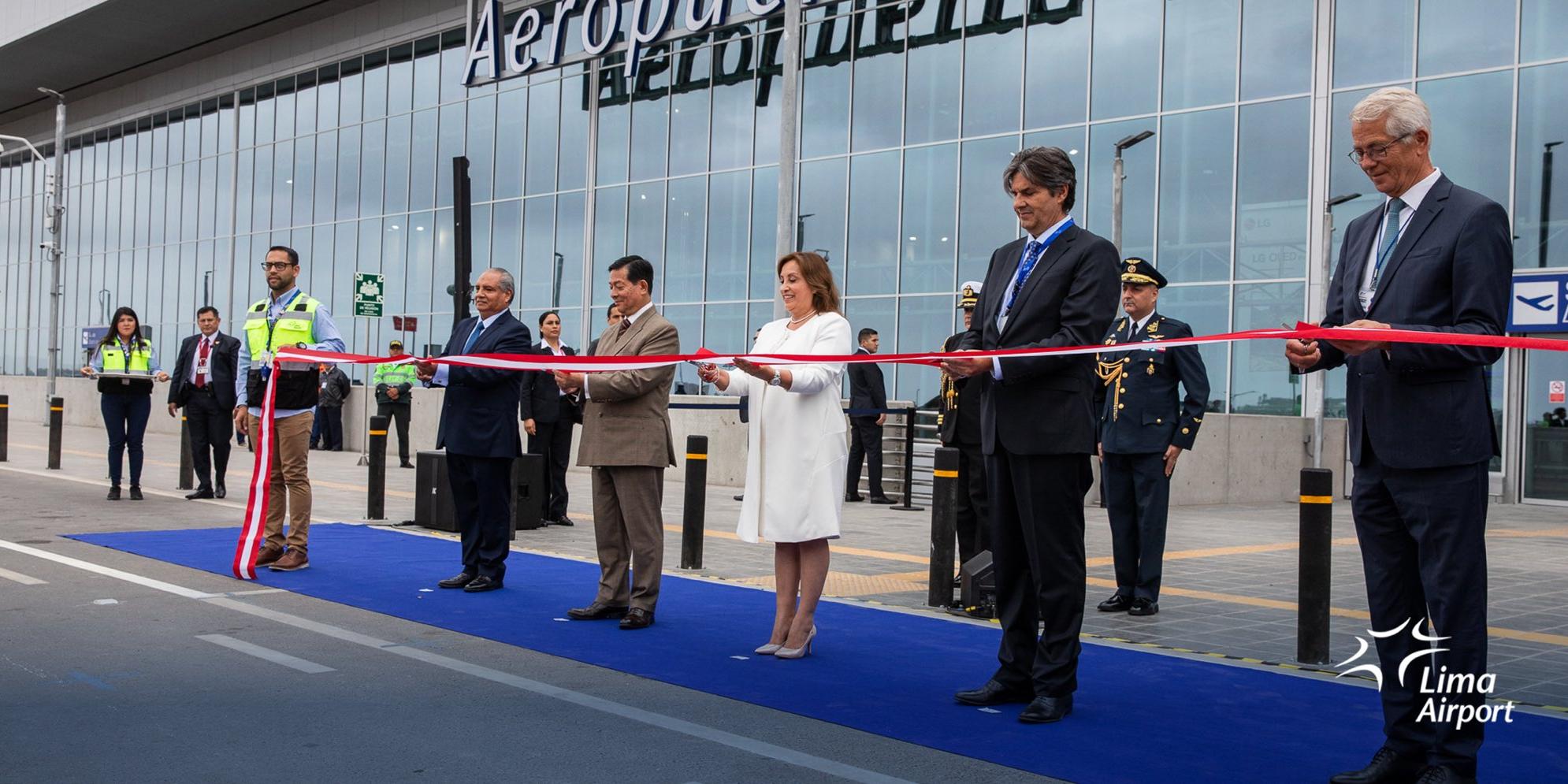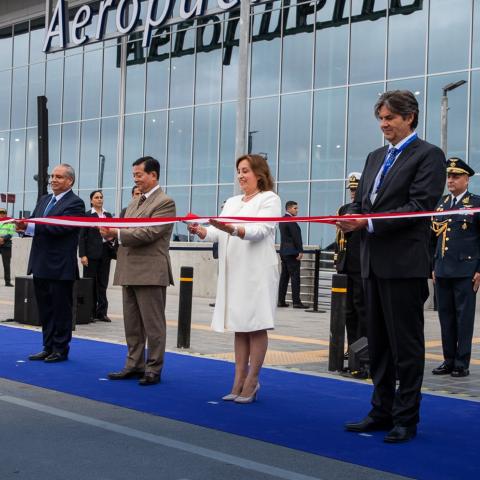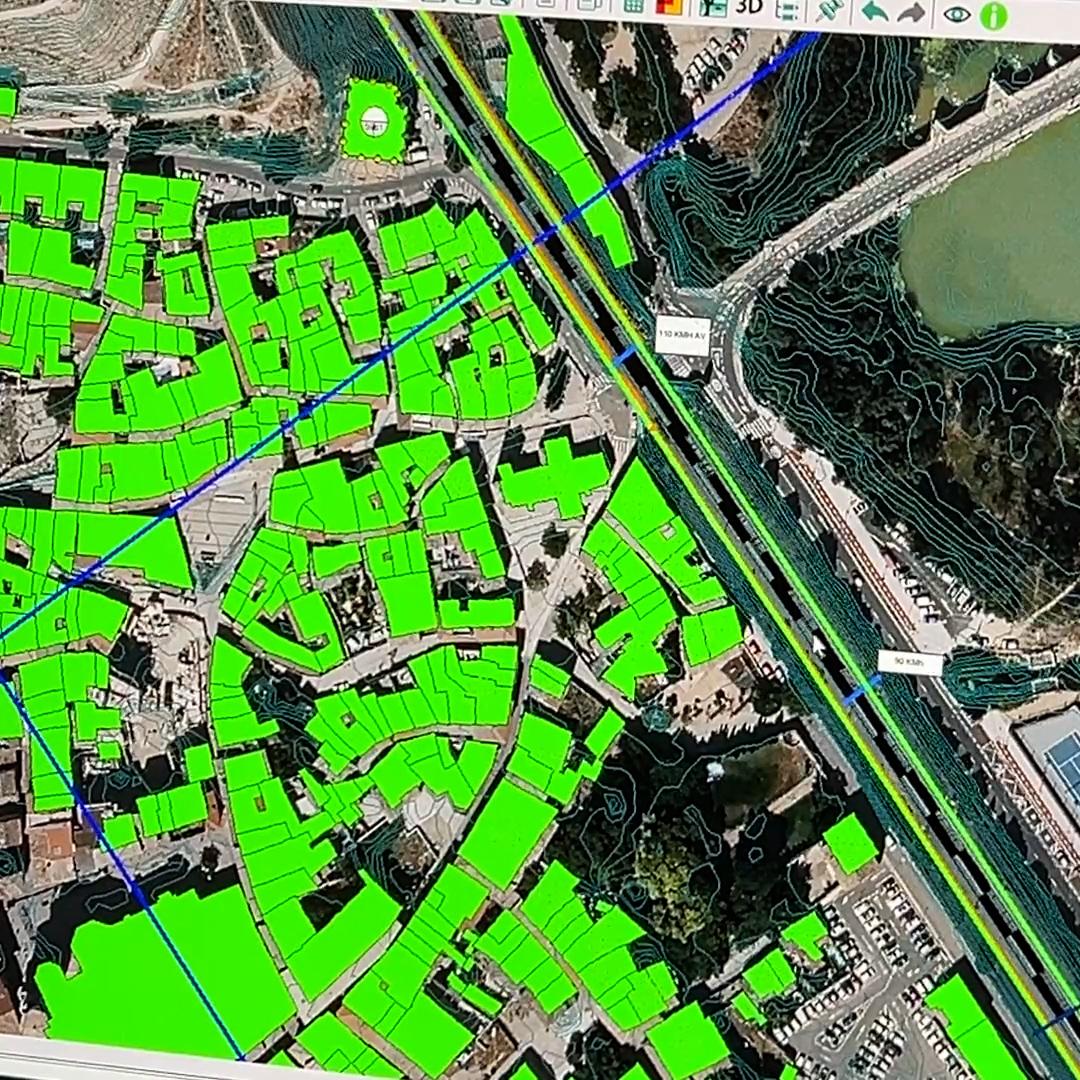
Dina Boluarte, president of Perú
Jorge Chávez International Airport, the main air gateway to Peru and one of the most important hubs in Latin America, has officially inaugurated its new passenger terminal, marking a milestone in its history and in the modernisation of the country's airport infrastructure.
The ceremony included the institutional participation of Ineco, a company that since 2014 has supervised the project's works in consortium with the Peruvian engineering firm CESEL. Representing Ineco, Ainhoa Zubieta, Director General of International Business, and Joaquín Llop, expert in project management offices (PMO) and construction management, attended and highlighted the magnitude of the project and Ineco's commitment to the development of strategic infrastructures in Latin America.
An expansion of historical dimensions
The new terminal, whose architectural inspiration is based on the Great Hummingbird geoglyph of Nazca, triples the area of the previous one to reach more than 260,000 m² —of which 209,000 have come into operation— and is located between the two runways of the airport. With five levels, 90 check-in counters, 46 boarding bridges, and state-of-the-art inspection technology (3D tomography for luggage), the new facility significantly increases operational capacity, which will rise to 40 million passengers annually from 2026.
The expansion has involved a total investment of 2.4 billion dollars and also includes the second runway and a 65-metre high control tower, both operational since 2023. The new infrastructure is equipped with more than 1,100 seismic isolators, being the first airport terminal in Latin America with this technology.
The Key Role of Ineco
For more than a decade, Ineco has played a key role in the advancement of this ambitious national project, commissioned by the supervisory body OSITRAN. The company has overseen the execution of the six work packages — including those for land preparation, airside infrastructure, and the new terminal with access routes — in coordination with LAP (Lima Airport Partners) and CORPAC, along with other public and private stakeholders.
The multidisciplinary team of Ineco and CESEL has carried out monitoring, control, and technical coordination tasks in all phases, from the initial demolition to the operational tests with more than 9,000 volunteers in simulated processes, up to the trials with real flights that began on May 15.
Future Outlook
The inauguration of the new terminal boosts the development of the "Airport City" project, with the prospect of new areas for hotels, logistics services, and commercial zones until the end of the concession in 2041. The airport is expected to generate up to 121,000 jobs and contribute more than 500 million dollars annually to the Peruvian state.








